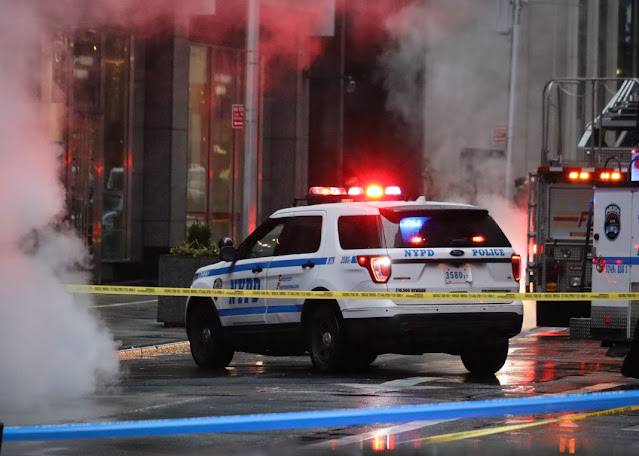What are your “favourite” unsolved crime stories?
Here's something to interest the crime writer's desire for inspiration
Anindya Kar lists 19 of his favourite unsolved crimes
1. The Axeman of New Orleans.
Active in New Orleans and some surrounding communities, this serial killer committed his crimes between May 1918 and October 1919, but there were similar murders as early as 1911. He was never caught or identified, but on March 13, 1919, a letter to “Esteemed Mortal” that was supposedly written by the Axeman was published in several New Orleans newspapers. It began with this chilling message: “They have never caught me and they never will. They have never seen me, for I am invisible, even as the ether that surrounds your earth. I am not a human being, but a spirit and a demon from the hottest hell. I am what you Orleanians and your foolish police call the Axeman.”
2. The Black Dahlia Murder.
The naked body of Elizabeth Short was found in two pieces on the morning of January 15, 1947, in an empty lot on the west side of South Norton Avenue in Leimert Park, Los Angeles. The crime remains unsolved despite garnering numerous suspects.
3. The Boy in the Box.
On February 25, 1957, the body of a 4-to-6-year-old boy was found in the Pennsylvania woods, wrapped in a plaid blanket and stuffed in a cardboard box. The boy was never identified.
4. The 2001 Anthrax Attacks.
Beginning on September 18, 2001, a week after the September 11 attack on the World Trade Center, letters containing anthrax spores were received by two U.S. senators and several media outlets, injuring 17 people and killing five. The FBI called the investigation that ensued “one of the largest and most complex in the history of law enforcement.”
5. The Keddie Murders.
In 1981 in Keddie, California, three members of the Sharp family, as well as one of their family friends, were bludgeoned to death with hammers, with one repeatedly stabbed. Whoever attacked them bound them with medical tape.
6. The Highway of Tears Murders.
Between 1969 and 2011, along the 450-mile section of Highway 16 between Prince George and Prince Rupert in British Columbia, Canada, 18 women—mostly teenagers of aboriginal descent—were murdered or went missing.
7. The Children Who Went Up In Smoke.
The home of husband and wife George and Jennie Sodder was destroyed in a fire late on Christmas Eve in 1945 in Fayetteville, West Virginia. George, Jennie, and four of their five children survived, but they never found the bodies of their other five children. For the rest of their lives, the Sodders believed that the missing children were still alive.
8. The Death of Elisa Lam.
On February 19, 2013, The body of 21-year-old Canadian student Elisa Lam was recovered from a water tank atop the Cecil Hotel in Downtown Los Angeles. Guests had been complaining about the water supply, so when maintenance workers investigated the issue, they discovered the body. She had been reported missing since the beginning of the month.
9. The Dyatlov Pass Incident.
10. The Tamam Shud Case.
On December 1, 1948 near Somerton beach south of Adelaide in South Australia, an unidentified man was found dead. The phrase “Tamam Shud” (“finished” or “ended” in Persian) was printed on a small piece of paper in one of the man’s pockets.
.jpg)
11. The Hinterkaifeck Farmstead Murders.
Six people living on a small farmstead in the town of Hinterkaifeck (43 miles North of Munich, Germany) were killed with a mattock during the evening of March 31, 1922.
12. The Disappearance of Amy Lynn Bradley.
Late in March of 1998, the 23-year-old went missing during a cruise on the Royal Caribbean International cruise ship, Rhapsody of the Seas. Although there were purported sightings of Bradley in 1998 and 1999, she is still listed as missing.
13. The Lake Bodom Murders.
Four teenagers were camping on the shores of Lake Bodom in Finland on June 5, 1960, when an unknown group or individual murdered three of them with a knife and blunt instrument. Though the fourth boy, Nils Wilhelm Gustafsson, survived the attack and lead a relatively normal life, he became a suspect in 2004. All charges were dropped in 2005.
14. Bear Brook Murders (The Allenstown Four).
Between 1985 and 2000, four unidentified murder victims were found in Bear Brook State Park in Allenstown, New Hampshire. All of the victims were all skeletons and believed to have died between 1977 and 1985.

Last seen alive on May 17, 1953 in Isojoki, Finland, Kyllikki Saari was riding her bike home from a prayer meeting when she was apparently attacked. The murderer was never found, even though the story received significant media attention. Her remains were discovered in a bog on October 11, 1953. Later that summer, her bicycle was found in a marshy area.
16. The Disappearance of Madeleine McCann.
In May 2007, while her parents ate next door, 3-year-old Madeline McCann disappeared from her hotel room. This was initially deemed an abduction until an incorrect DNA test stated that the girl died in the hotel room. The abduction case reopened in 2008.
17. The Original Night Stalker/East Area Rapist.
Between 1979 and 1986, this rapist and murderer killed at least 10 people in Southern California. He called his victims years later, saying terrifying things like “Merry Christmas, it’s me again!” before hanging up.
18. Villisca Axe Murders.
Six members of the Moore family and two house guests were found bludgeoned in 1912 in Villisca, Iowa with severe head wounds from an axe. Though there were several suspects, including one who was tried twice and acquitted, the murderer has never been identified.
19. The Houston Ice Box Killer.
Charles Rogers disappeared in June 1965 after police discovered the dismembered bodies of his elderly parents in the refrigerator of the Houston home they shared. The media named the crime “The Icebox Murders,” and Rogers was declared dead in absentia in July 1975. He remains the only suspect, and has never been found.
These creepy cases still go unsolved to this day. Some of the killers might even still be out there… waiting to strike again!

Steven Haddock - Story from Toronto
Barry Sherman was the primary shareholder of Apotex Inc., which is a large and well known generic pharmaceutical company here in Canada. He and his wife Honey (who he had been married to for over 40 years) were found dead in their own luxury home in a super-nice neighbourhood.The police first thought it was a murder-suicide as they had both broken from their normal routine in the days leading up to the discovery of the bodies, but after the autopsy showed they were both strangled to death that didn’t hold up so they started investigating it as a double murder.
We’re four years in now and it’s still a mystery. There are loads of suspects. Sherman’s company was particularly litigious in its attempts to attack drug patents. They had four kids (each of who will get an equal share of an estate estimated to be worth $3.2 billion (Cdn.)) and they had recently been involved in a zoning dispute near the site of their new home where they were seeking over $500,000 in litigation costs after they won and received judgment for $300,000.
Of course, the weirdest part is that the bodies appear to have been deliberately staged to resemble a well known work of art. In addition, it doesn’t appear anyone broke into the home.
I talked to my cousin’s daughter who is a police constable attached to the homicide squad a couple of years ago. They didn’t have much.
The leading theory is that it has something to do with Barry’s plans to change his will to ensure Honey’s well being after he died, but that isn’t panning out.
Ted Sirek - WW1 Case unsolved
Hinterkaifeck in Germany. Sometime shortly after World War 1, an entire family was brutally murdered by an unknown assailant. Texarkana Moonlight Murders: in the last half of the 1940s, several people were murdered while parking on “Lovers Lanes”.
The Texarkana Moonlight Murders, a term coined by the contemporary press, was a series of four unsolved serial murders and related violent crimes committed in and around the Texarkana region of Arkansas and Texas in the late winter and spring of 1946.




No comments:
Post a Comment